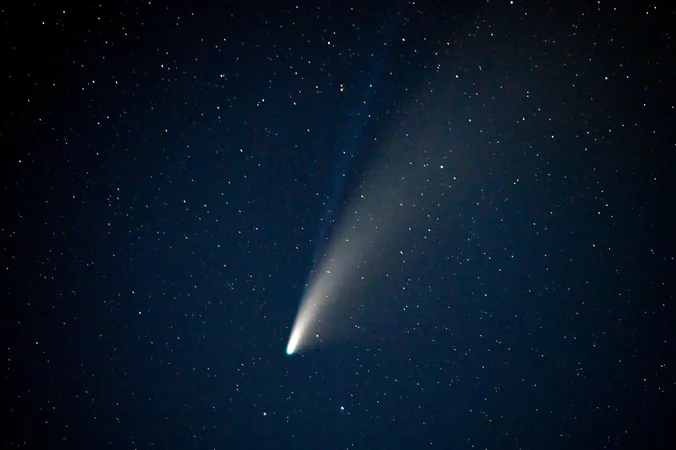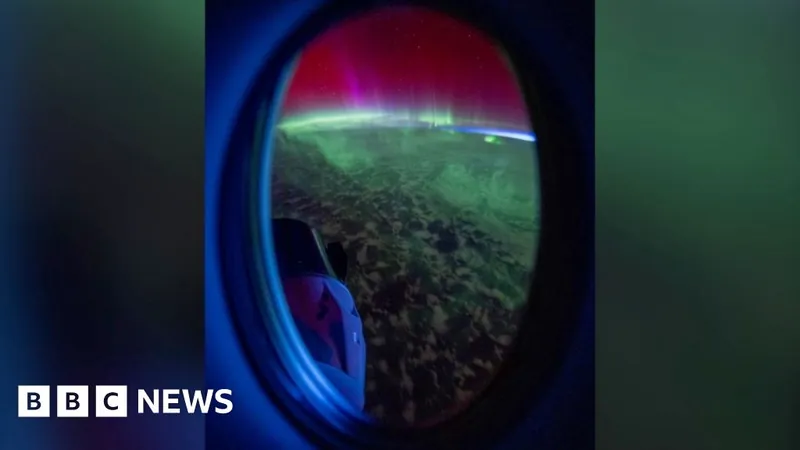
Comet A3: Prepare for a Celestial Show as It Slingshots to Sunset!
2024-10-03
Author: Ming
Exciting news for stargazers!
Comet A3, officially named C/2023 A3 (Tsuchinshan-ATLAS), is gearing up for a spectacular appearance in our night skies. While early reports suggest it hasn’t yet become a naked-eye object, astronomers are buzzing with anticipation—especially with expert tips on capturing this cosmic traveler on camera.
When to Look for Comet A3?
Mark your calendars: the comet will make its grand re-emergence around October 12, and for approximately two weeks, it will offer stunning views for keen observers across the Northern Hemisphere. After skirting through the sun's glare, Comet A3 will become easily visible just after sunset—no more early morning hunts!
Key Viewing Dates and Times
On October 12, Comet A3 will be at its closest approach to Earth—around 44 million miles away! This date marks the peak viewing opportunity as it aligns perfectly between the Earth and the sun. Just look towards the western sky right after sunset, which in many parts of the U.S. occurs shortly after 7 PM local time. The impressive tail of the comet will reflect the sunlight, creating breathtaking displays.
In the days following (October 13-18), the comet will set later each night—making visibility even better. Expect it to remain in the sky for about two hours post-sunset during this time, with its brightness peaking at magnitude +2.8, making it easily observable without binoculars.
Where to Find It?
Throughout this celestial event:
- **October 12-16:** The comet will be conveniently located in the constellation Virgo, shining its brightest.
- **October 17-19:** As it moves into the constellation Serpens, look for it above bright Venus in the west.
- **October 20-31:** It journeys into Ophiuchus, with its brightness dropping slightly, drifting into a realm where binoculars may be necessary for the best view.
Why is This Comet Special?
What sets Comet A3 apart from others is its trajectory and brightness. Astronomers refer to a phenomenon known as “forward scattering,” where sunlight reflects off the comet's dusty tail towards Earth. This means as it approaches, you can expect a dazzling sight across the night sky—assuming clear weather, of course!
Stay tuned for daily updates and tracking charts to help you catch a glimpse of Comet A3. These two weeks could be the highlight of the astronomical calendar, so don’t miss out!
With October shaping up to be an exciting time for astronomy enthusiasts, prepare your cameras and telescopes and get ready for this stunning show of lights against the dark canvas of the night sky. Happy observing!




 Brasil (PT)
Brasil (PT)
 Canada (EN)
Canada (EN)
 Chile (ES)
Chile (ES)
 España (ES)
España (ES)
 France (FR)
France (FR)
 Hong Kong (EN)
Hong Kong (EN)
 Italia (IT)
Italia (IT)
 日本 (JA)
日本 (JA)
 Magyarország (HU)
Magyarország (HU)
 Norge (NO)
Norge (NO)
 Polska (PL)
Polska (PL)
 Schweiz (DE)
Schweiz (DE)
 Singapore (EN)
Singapore (EN)
 Sverige (SV)
Sverige (SV)
 Suomi (FI)
Suomi (FI)
 Türkiye (TR)
Türkiye (TR)